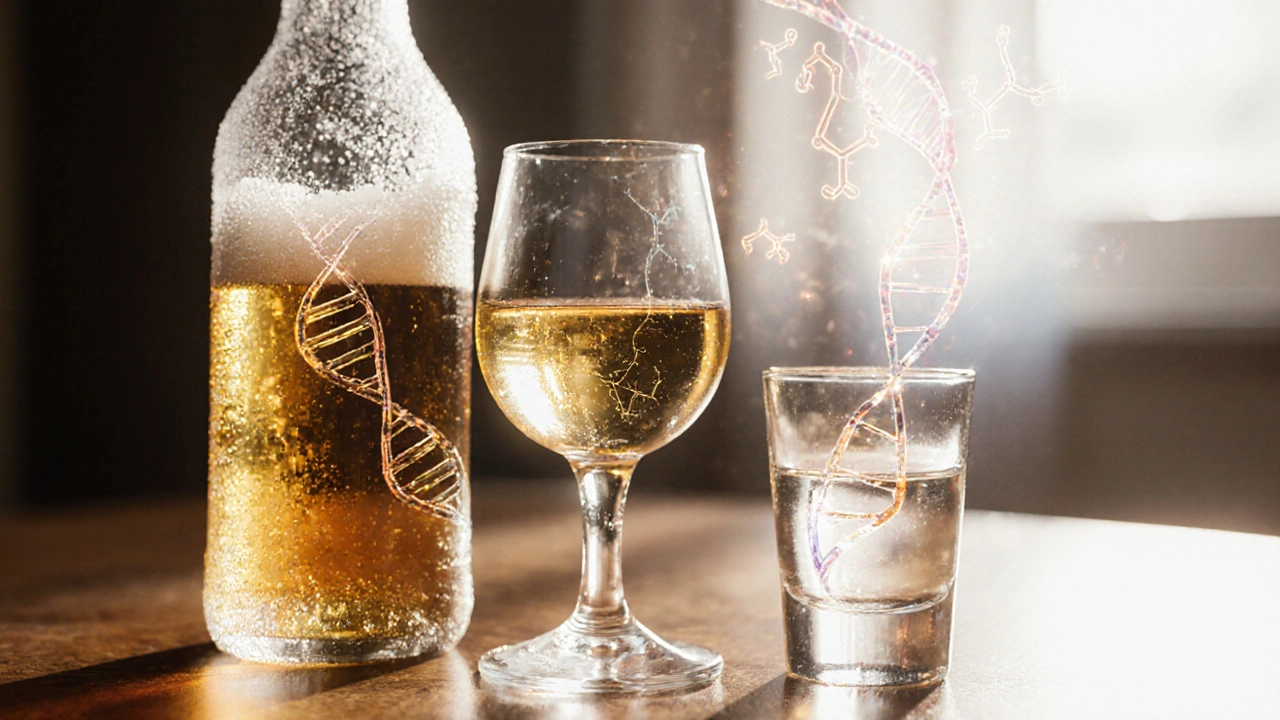Alcohol and Cancer Link: What You Need to Know
When talking about the alcohol and cancer link, the relationship between drinking alcohol and developing various cancers. Also known as alcohol‑cancer relationship, it matters because dozens of studies tie even moderate drinking to higher odds of tumors in the mouth, throat, liver, breast, and colon. The link isn’t just a myth; it’s backed by data that shows alcohol acts like a weak carcinogen on its own and also amplifies other risk factors. Understanding this connection helps you weigh the short‑term pleasure of a drink against long‑term health consequences.
One of the main culprits behind the alcohol and cancer link is the body’s production of carcinogens, substances that can damage DNA and trigger uncontrolled cell growth. When alcohol is broken down, it creates acetaldehyde, a toxic metabolite that directly harms cellular DNA. Acetaldehyde also interferes with the body’s ability to repair that damage, making cells more likely to turn cancerous. In addition, drinking can increase the absorption of other known carcinogens, like those found in tobacco smoke, creating a double‑hit scenario that compounds risk.
Key Factors to Consider
From a research standpoint, epidemiology, the study of disease patterns in populations provides the backbone for our knowledge about alcohol‑related cancers. Large cohort studies across continents consistently show a dose‑response curve: the more you drink, the higher the cancer odds. These studies control for variables such as age, gender, diet, and smoking, isolating alcohol as an independent risk factor. They also reveal gender differences—women often face a greater relative risk for breast cancer even at lower consumption levels, while men see higher rates of liver and esophageal cancers.
Another related entity that shapes the picture is overall cancer risk, the probability of developing cancer based on lifestyle, genetics, and environment. Alcohol adds to this risk by influencing hormone levels, especially estrogen, which can spur breast tissue changes. It also weakens the immune system, reducing the body’s ability to spot and destroy early‑stage tumor cells. Genetics play a role too—people with certain enzyme deficiencies process acetaldehyde slower, leading to higher internal exposure and greater risk.
Putting all this together, the alcohol‑cancer connection isn’t a single‑cause story; it’s a web of metabolic, genetic, and environmental factors. Knowing how acetaldehyde, epidemiological trends, and overall cancer risk intersect gives you a clearer view of what’s at stake. Below you’ll find a curated set of articles that break down each piece—whether you’re looking for the science behind carcinogens, the latest population studies, or practical tips on reducing your exposure. Dive in to get the facts that can help you make informed choices about drinking and health.

How Alcohol Consumption Raises Carcinoma Risk: What the Science Says
Explore how alcohol consumption contributes to carcinoma risk, the science behind it, which cancers are most affected, and practical steps to lower your chances.